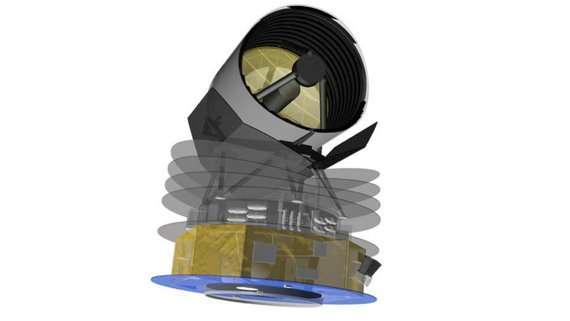'Super-cool' observatory to explore hidden universe

A space mission designed to solve fundamental questions about how galaxies and forming planetary systems grow and evolve will be considered by the European Space Agency (ESA).
The project, named SPICA (Space Infrared Telescope for Cosmology and Astrophysics), will involve scientists from the University's School of Physics and Astronomy, and will be considered by ESA as a candidate for its next medium-class space mission, with launch envisaged at the end of the next decade. The joint European-Japanese observatory will be developed over the next two years together with two other candidate missions.
Unlike visible light, infrared radiation is not absorbed by the dust that pervades the universe – as a result, observations in the infrared can unveil the hidden universe, allowing astronomers to see deep into the inner reaches of galaxies, star forming clouds and planet forming systems.
The SPICA observatory will have a 2.5-metre diameter telescope cooled to only a few degrees above absolute zero temperature to reduce the radiation emitted by the telescope itself to the absolute minimum. Equipped with extremely sensitive detectors, it will be able to study objects out to the farthest reaches of the universe.
Cardiff University scientists will join forces with almost 20 intuitions from 15 countries around the world to build one of SPICA's instruments, called SAFARI.
Cardiff scientists will provide key optical components to select and control the wavelengths of light transmitted by the instrument, and work with Cambridge University on developing part of SAFARI's superconducting detector system.
Professor Matt Griffin, Head of the School of Physics and Astronomy and UK spokesperson for the SAFARI team, said: "Selection by ESA for this study is an important milestone for SPICA. This observatory promises a huge leap in our ability to study the Universe. With its super-cool telescope and ultrasensitive detectors it will be hundreds of times more sensitive than previous infrared space telescopes."
Professor Peter Ade, who is also based at the School of Physics and Astronomy and leads the Cardiff technical programme said: "Cardiff's unique experience and expertise, developed in working on previous infrared space missions, is essential to make SPICA possible. We expect this intensive two-year study to demonstrate that this great observatory is ready to fly."
Provided by Cardiff University




















